|
When I arrived at the top it sort of leveled and a wide space appeared surrounded by short bushes, wild olive trees. After I reached to the spacious small plateau, I turned my back towards the route I came from to see the view and there it was the town of Kusadasi spreading towards the Aegean Sea. At the top point a Pond appeared so I reckon this area was used by dairy farmers for their animals to spread and get fed and watered. Then I realized a stone pit, a cistern if you may call it was right next to the pond. Seeing the stone laying technique it was at least 70-80 years old, maybe older. Small Pebbles down at the bottom all squezed Then I started viewing Kusadasi town panoramically including the coast of Kusadasi and some of the inland parts from North to South. This first picture is from the North side of Kusadasi town. The black windowed structure on the right top is the Main State Hospital of Kusadasi. The building to it's let at the edge of the coast is Korumar Deluxe Hotel. Further in the back the long beach you are seeing is Pamucak Beach near the coast of Ephesus Ancient City. Then I turned a little to left to the est of the town to view the down center of Kusadasi. The main landmarks that you can see here is the Minaret of Kusadasi Kaleici Mosque and a little further to the left is the Turkish Flag As you proceed with viewing to the Left and look at the western side of the town, you see the small portion of green left at the top of the hill İki Oluklu neighbourhood of Kusadasi. The slopes of that green hill is considered as the Old town of Kusadasi. And the left side of the picture there is a slight green area that is the Snake Island. Here's a closer look to the only green hillside left in Kusadasi downtown. On the right edge is the Statue of Mustafa Kemal Ataturk the founder of Modern Turkish Rebuplic in 1923. As I continue looking more to left and view the southwestern side of the town I started seeing the coast of Ladies Beach and several hotels in that District. This is the view of Sea Pearl Hotel at the Coast of Ladies Beach in Kusadasi Here's one of the promontories in Kusadasi This is the view of the Dilek Peninsula National Park (the hill range on the left side of the picture) meeting with the Greek Island of Samos in distance, there is actually a 1.2 kms wide natural strait that separates the two countries. Phenomenal rocky cliff overlooking the coast of Aegean sea in Kusadasi. There is a small gorge in between two rocky hills. I walked on that rocky hill, the surface looks like a volcanic shape with strange hollowed rock formations very difficult to walk on. At the very top of this hill is a weather report center. I decide to continue look more to the south but the path is slightly rocky and bushy in that section, I will hike through some rough terrain and try to view the southern side of Kusadasi coast from the top. As I walked through the path it lead me to the edge of a cliff but the view was fascinating except some trash along the side of the hiking path. This is the Degirmendere District of Kusadasi where the plains open up to high mountain range that feeds Kusadasi with it's fresh water sources. You are viewing some of the farmlands in Degirmendere District. As I turn to the coast and I see the most beautiful and longest beach area of Kusadasi running nearly 30 kms. towards the Dilek Peninsula National Park. This coastal district of Kusadasi is located in the southern part of the town and utilized by several Hotel Investment facilities but also secondary homes of the locals and foreigners. And as I look further I can't help but notice the terrible looking modern tall apartment buildings placed on a hill at the southeastern end of Kusadasi town.
Why Ephesus was abandoned? This is one of the most frequently asked questions by travelers who are on private tours of Ephesus with guides. City’s surroundings City’s defense walls - later city walls and one of the gates of the city How were the communication lines? Where were the Graveyards? Where were the Marble Quarries?
Among these 35 types some came from Italy, Egypt, Libya, Tunusia, Greek Islands. But mostly around Ephesus there are 25 marble quarries available. We found these quarries one by one, and studied at them. The pieces that were cut in the quarries are sent to the city half-proccessed. There are several reasons for that to eliminate the low quality ones at the quarry, they process it a little and if it doesn't brake it means it is safe to sue and to be sent to the city to be worked on. Most of the marble quarries are very near to the banks of River Kaystros. One of them that you can easily see is Kuşini Marble Quarry, this quarry is an exceptional because it is a Closed Quarry. They opened it as a Gallery, they left column-like supports from the main bedrock, and went all the way below. Near Pamucak Ephesus Princess Hotel, below that hotel there is a unbelievably big marble quarry.
They would do this either with Mirror, Fire or Smoke. According to calculations and information could be delivered at Ephesus at least in half an hour from a 50 mile distance from Smyrna. Article 4 will be about the areas he worked on excavations at Ephesus Ancient City his memories and some unknown areas yet to be discovered. This blog post is consisted of more personal stories so it will be interesting for not only tour guides for Ephesus but also for the general audience who is interested in discovery stories. What are the effects of technology to Archaeology? The structure he thought was the Synagogue of Ephesus? Stoa of Alitarc at the entrance of Ephesus Terrace Houses? The Turkish Movie that was filmed here... His thoughts on delivering the information to tourists Is there a relation between Narthex plant and some ancient settlements? The undug area across the Terrace Houses in Ephesus. The theory of Lyzimakhos’ Villa at Ephesus Ancient City.
Then they check if the found a wall how long it goes to different directions only by excavating the area as a conventional practice. But now the technology is so advanced, there is geophysics radar, geo-radar, you run that system and see how long the walls would go underneath without needing any excavation. And he gives some interesting information about the radar scanned parts of Ephesus. at the Upper entrance ticket office, there is a path going towards Domitian Temple and the Terrace Houses. There has been a geo-radar ground survey practiced over there, and they found out that there is a majestic avenue underneath, the columns are still standing. But I am not for it to be excavated, because the technology is in a progress and developing every day. We do not want to experience the same things that happened in Terrace Houses Unit 1. First you need to find the funds to preserve and restore then you should start excavating.
It reminds him straight the Synagogue of Sardis and he reckons they found the Synagogue in Ephesus as well. It turns out it's just a extraordinarily beautiful road junction where they placed this fountain.
Article 3 Will mostly be about the Terrace Houses at Ephesus. What is the total area that Terrace Houses cover? What are the different time periods of Terrace Houses? What are uses the Terrace Houses area had after inhabitance? Who is the owner of the House at Terrace Houses Dwelling Unit 6? Where does it say that the house was owned by that particular person? What other names do we know stated as the owners of the houses? Restorations at Terrace Houses Restoration of the columns at the Courtyard at Terrace Houses Unit 6 The restorations of the Wall Paintings and the Frescoes at the Terrace Houses of Ephesus. The protection roof project of the 1960s. What are some of the used materials Marble? About Details of some of the areas at the Terrace Houses in Ephesus The Cult section at Unit 6 Where were the entrances from? How was the lighting arranged in the Houses of Ephesus Ancient City?
Some of the walls has up to 8 layers of stucco and wall paintings. Some of them have 2 to 3 different layers from different time periods. And he talks about some of the staircases used or added in later periods And he talks about a vault being covered and be used as a wall in a later usage period. And about the restoration systems the restorators normally uses different colors to show the difference between the originals and the restored parts. But according to Cengiz İcten Austrian restorators at Ephesus didn't apply this system and kept it same color so it is almost impossible to distinguish the originals from the restored ones unless you are an expert.
There is an earthquake in Ephesus in 260sAD, most of these houses were destroyed by the earthquake so after this earthquake most of these houses were used as workshops we are going to see Mills, blacksmiths workshops and Marble Cutting Studios in the following parts.
And about the owner of that house Vilius Salitarius there are so many gossips written on the walls of his toilet as graffiti. The gossips include some explicit content including his sexual preferences. So similar to nowadays that toilets were the locations to see such speculative messages.
This was one of the wealthiest families at Ephesus, he also is a priest for Dionysus Cult he is also responsible from the Upper (State) Agora of Ephesus so he has plenty of money that's why his house is 710m2. He has the private bath, banquet feast reception hall. This reception hall alone is 135m2.
They were randomly put into boxes as they were found later realizing they were all pieces from different parts with varying sizes different thickness and different colors. First they were boxed then they were categorized according to their thickness, now around %90-95 is on the tables. They are being placed over a very robust type of paper called the honeycomb so that they can be moved easily.
Unfortunately many valuable finds were lost and destroyed from Ephesus Terrace Houses Unit 1. And later in the 80s, Austrians wanted to start a new project Terrace Houses Unit 2. Us as the official museum authority told them they can excavate but they should also be responsible of the restoration and the maintenance it needs after excavation. It turned out to be something beautiful, a very good project. There used to be a former Roofing systems in the early years. Gilbert Wiblingert made the roof project of the Terrace House Unit 2. Maybe it was good or bad, but at the academy in Austria there was a competition and Gilbert's team lost after that the roofing is removed from here and this new roof system is constructed instead. Maybe it doesn't look very appealing from outside, looks like a greenhouse but it protects the finds at it's best potential. The researchers and restorators can work even in the winter time but 11 million US Dollars of money is spent for it. This weakened the Austrian excavation team a little. After Krizingen period there was another competition at the academy in Austria and Sabine won that. And after that 11 million dollars of expense Austrians couldn't initiate another large scale project like this.
Later these columns were joined back and they drilled the center of the columns to fix a metal dowel and tied to a steel construction on the floor.
Here we are proceeding with our Ephesus Study Trip sequel with our 2nd post. In this post we will share couple of videos discussing the information about Water Sources and Water Lines in Ephesus Ancient City and the Terrace Houses.
And he shows the supporting marble on that well with 3 niches inside, where you release the buckets with ropes and this well goes 15 meters (45 feet) deep.
Recently as Ephesus Tour guides we organized an educational study trip to Ephesus with an expert archaeologist Cengiz Icten who worked at Ephesus over 20 years as Museum Director. As professional Ephesus tour guides who conduct mostly private tours of Ephesus and some of us also work for agencies that organize group tours to Ephesus we have to update ourselves with the new discoveries and also refresh our memories with some of the information which has already been there for years. This particular tour to Ephesus with an expert guide was mostly concentrated on Terrace Houses section of Ephesus but since we are already at the Site we said we might as well ask some other questions in mind generally about Ephesus. I decided to record the sound and video of this educational tour exclusively organized for private guides for Ephesus. And it was a 170 minute long informative sound recording and videos. There was so much information about Ephesus that we use as tour guides, but also so many more that most of us would hear for the first time. I decided to divide the whole video shoot into smaller chapters, then I separated them by order in categories about certain subjects. Since there are over 50 videos, I will divide them into at least 5 groups and I will publish them in forms of blog articles in series. Here are the 5 groups that this sequel will follow Article 1 The small artifacts and details that we hardly notice while we tour Ephesus as tour guides but never realized what they are for and what’s the story behind their discoveries Article 2 will be with these Topics is about the Water Sources both for the City and the Terrace Houses at Ephesus Article 3 Will mostly be about the general use of the Terrace Houses at Ephesus Ancient City, the physical conditions such as size, timelines etc. Restoration and preservation at Terrace Houses in Ancient Ephesus. Article 4 Will be about the areas that our Ephesus Expert Guide Mr. Icten worked on excavations and about his memories. some unknown areas yet to be discovered around Ephesus. What are the effects of technology to Archaeology The structure he thought was the Synagogue of Ephesus. Stoa of Alitarc at the entrance of Ephesus Terrace Houses. The Turkish Movie that was filmed here at Ephesus Ancient City in the 70s. His thoughts on delivering the information about Ephesus to tourists on our private tours to Ephesus city. Article 5
City’s surroundings City’s defence walls - later city walls and one of the gates of the city. How were the communication lines between Ephesus and other cities around Ephesus. Where were the Graveyards? Where were the Marble Quarries? Today I have a plan to visit Ephesus from Istanbul. I plan to get to Ephesus by using only public transportation from Izmir Airport I plan this trip to be in 1-Getting to Sabiha Gokcen Airport 2-Flying to Izmir at 07.00 - arrival at 08.00 3-Getting to Tepekoy from Izmir Airport 4-Getting to Selcuk from Tepekoy 5-Getting to Ephesus lower gate from Selcuk 6-Getting to Ephesus from the parking lot After passing from the second security control, I stopped to get myself a breakfast. I had a cup of tea for 11 TL and a slice of potatoe pastry for 22TL and I paid 33TL in total. I was on board at 6.45 am and there was no one sitting next to me so It was a pretty comfortable flight. I am flying with Pegasus Airlines and on their in flight magazine there were some quite nice reads about archaeology. And I also saw on this months issue of National Geographic they talk about the Ancient farmers of Anatolia. And there was an article about one of my favorite sites in Turkey, Sagalassos. Also there was an article about the neolithic site of Boncuklu Hoyuk in my ignorance I was hearing it for the very first time. So it was quite an interesting 1 hour flight for me reading these articles about archaeology in Turkey.
Once you are outside the Gate of Arrivals in Izmir Aiport, you will see the Yellow Taxis like any other airport. I asked the tariff to get to Ephesus from there, they quoted me 350Turkish Lira which is around 40Euros. My aim is to get to Ephesus from Izmir Airport on my own by using public transportation so I continue with my adventure. I cross the street and need to use these stairs (escalator) or the elevator to get to the bridge that will get me to the railroad stop which is right in front of you once you get out. Right below the bridge that lighted area is the railroad stop. The lane closer to you is going to North which is the center of Izmir. The other lane goes to South which is Ephesus direction. Once you are on the second floor (the departures floor of the airport) or at the Bridge you walk 50 yards and see the entrance for the METRO IZBAN sign on the left. Once you are at the train stop you have 2 options FIRST OPTION You can go by Incity Tram called IZBAN. I have checked the timetable online and there was one at 08.12 am which was impossible to catch and a second one at 8.36 am. You need to check for the ones going to TEPEKOY. Not to CUMAOVASI. So they are 24 minutes apart in the mornings. On this picture above, you realize 2 Green Signs with Arrows showing the Lanes and Directions. The one on the LEFT says KUZEY (North) which goes to Izmir downtown center. And the one to the RIGHT says GUNEY (South) which is the direction for EPHESUS. I have my IZBAN card, but as I tried to use it I realized I didn't have sufficient money inside.
So I had to load some money in it by using the machines. If you are planning to use incity tramline which is called IZBAN you either need to have the prepaid card with you or if you do not have the IZBAN card you can get 3 to 5 use tickets from the machines that are available at the train stop. Once you go through with your ticket, you need to turn RIGHT and use the door on the Right side, which leads to South to EPHESUS.
So I arrived at TEPEKOY at 09.09 am As I realized there is no in-city tram to be connected to Ephesus in the following half an hour. I asked the Security over there and he reminds me of that 09.14 INTERCITY train which was suppose to arrive at 9.45 in TEPEKOY Station. So that was a 35 minute wait which is reasonable. And that would take me to SELCUK at around 10.10 am But I had to get to the Eastern side of the railroad by going under the tunnel.
So I went to the ticket office and bought a ticket to SELCUK paid 5.5 TL And started waiting for the train From Izmir to DENIZLI direction. You train will come from the RIGHT side.
This train station is one of the classical Colonial looking stone buildings, I always enjoyed looking at these structures. You can not really rely on the times of the intercity trains in Turkey, this one was delayed for more than 10 minutes for instance. Finally it arrived at 9.56 and I arrived in Selcuk (Ephesus) train station after a 25 minutes train ride at 10.19. You will realize that you are getting closer to SELCUK, when you look out from the right side (west) window, you will see the big mustach Mockup of a restaurant
then few seconds later you will see the Ayasuluk (Selcuk) Castle at the Top of the Hill. Here below is the Main Local Bus Station of Selcuk town. And I am about to miss the minibus leaving for Ephesus for seconds. And I had to wait another 20 minutes for the next minibus.
This is another problem, I arrive at the train station from Izmir and I walked pretty fast until here, and I should be able to catch if the timetable was arranged according to IZBAN hours. But apparently they weren't so it adds another 20mins. to your journey. Once you are at the Bus Terminal in Selcuk, you need to look left end of the station to see this Green Colored minibuses, saying PAMUCAK - SELCUK in front of them and with a tiny Brown sign saying EPHESUS. Missing the one which just left seconds ago, I get in the next one on the line and ask the driver when is this one departing. He says in 20 minutes, plus the driving will be another 10 mins. or so... So overall a little over 30 minutes. And I consider the walking distance from the local bus station to Ephesus. It is 3.5 kms. and acording to google that will take around 40 minutes. And it's about the same time. And I said why not, the weather is good, and I don't have a big suitcase so I decided to walk.
Here is a second option for you to go from Selcuk downtown bus terminal to Ephesus and it is minibus going to KUSADASI. This will still require for you to walk once you get off from the minibus on the main road and you have another 1km. to walk around 12 minutes. Still it goes to same direction as Ephesus. And I asked the driver what time it will depart for Kusadasi, and it wasn't until another 15 minutes.
So I decided to to take the advantage of the beautiful clear skies and weather to walk to Ephesus ruins by leaving Selcuk bus terminal from this roundabout you see on the picture below. Once you have the terminal right behind you, you need to walk straight from this roundabout to west having the Hospital on your left and the parking lot of the Ephesus Museum on your right once you cross the streetlights. As you continue walking from the main road. You may choose to go from either side of the road. The right side has the infamous Mulberry path that leads you via the Local Gendarme - Police Station then The entrance of Temple of Artemis.
The left side of the lane takes you via the Hospital, a Korean Restaurant, then the Local Cemetery of Selcuk. After 30 minutes of walk you will realize the junction allowing you to turn left, with a Carpet Store and a TAXI sign on the left. That's where you take the left turn and continue walking. Once you took the left from the main road and started walking up towards Ephesus, you will realize Gendarme - Police checkpoint on the right. That's for the vehicles getting to Ephesus.
You are headed to the Lower Entrance and the Tour Bus Paking Area for Ephesus Tours. Passing the gendarme checkpoint, their will be another road junction waiting for you with some brown signs saying MERYEMANA (House of Virgin Mary), YEDIUYURLAR (Grotto of the Seven Sleepers) to the Right. Straight and another option is to go right. The right is for vehicles to reach Ephesus Parking area. Mostly for the tours who leave their tourists at the Upper Gate and the buses will drive down to the lower gate to meet them. You need to walk straight to Ephesus. This walk is relatively steep compared to what you have been used to on this trip but don't worry it is the last 5 minutes of your journey before you reach Ephesus ruins.
Here's a surprise the Green Minibus that we saw at the Bus Station is here as we were about to reach Ephesus, and the driver beeps and says hello. So our calculations were not bad, we arrived almost at the same time well maybe we are late for couple of minutes but we really enjoyed the walk to here. After we finish the road we entered the Parking Area of Ephesus and seeing all the busses that left their passengers who came for Ephesus Tours and will end their tours here at the lower gate.
This is where there are also Taxi service is available along with Horse Chariots. The two options to take you to the Upper Gate if your intentions are to make a one way tour. Or if you are also planning to visit House of Mother Mary. There are no public transportation available to there so you either need to walk all the way for 8 kms. which will take less than 2 hours or you can go by these taxis. Same taxis are available at the Upper gate, too. So you can start your walking tour from the lower gate where we are, and walk your way up to the Upper Gate seeing all the attractions at Ephesus Ancient City and you can take the taxis from the Upper Gate to House of Mother Mary. At the Lower Entrance of Ephesus there are several shops for souvenirs, books, clothes, bags and there are also Cafes and Restaurants if you'd like to take your time and grab fresh squeezed orange and pomegranate juice before you start your nearly 2 hour walk at the Ancient Ephesus ruins.
A small insider tip, this first shop next to the Ticket booth has a passage that you can walk through and right behind the shop is a small tea place where bus drivers also hangout. If you want a truly local observation it is something you might want to try. Here is the ticket office, there are plenty of options when it comes to buying tickets.
Because in the vicinity of Ephesus Ancient City there are several more attractions separate admissions. Even inside Ephesus there is a separate section called Terrace Houses which requires a separate admission fee. So you may want to decide which sites you plan to visit that day so that you can take the advantages of buying combined tickets that covers several sites with discounted fees. My suggestion is for you to check the Regional or Country-wide Museum Passes for the best value. Anyways for Ephesus Ancient city, you can go just for and entry ticket to Ephesus Site only Ephesus Site + Terrace Houses Ephesus Site + Terraces + St. John + Museum After you purchase the combination that suits you best for the day, you use your ticket to get in via the turnstile, after that there is a security check point right before you reach the WC Toilets on the right side. And also the Museum shop is available on the Left side with a collection of souvenirs and also food and beverage options available here. Right next to the Museum shop is a booth for renting Audio Guide for Ephesus in case you need. Hi! Welcome to Ephesuskusadasiguide.com Today we at Kusadasi Cruise Port on this wonderful winter day. And we will try to explain how you can go to Ephesus from Kusadasi Cruise Port on your own. We figured out that there are no direct public transportation available from Kusadasi Cruise Port that goes to Ephesus. So we will try to explain it in 3 Steps Step 1
Here we start from Kusadasi Cruise Port premises, passing through the Stores, Restaurants, cafe’s, souvenir stores, silver stores, once we are out from the port premises. This is the first view you are going to see once you walked out from the Gate of Arrivals at Kusadasi Cruise Port. On the left side one Jewelry Store and straight ahead is a carpet store. Once you pass those two stores the walkway will split to two with a Leather Store right on the corner. You can go on either side. If you choose to go to the left, you will walk in front of a tour company's office, which is the only tour company located at the Cruise Port. We can make a story about how to go to Ephesus from Kusadasi cruise port with a tour company on another post. And if you choose to go to right this path will lead you to the waterfront cafes and restaurants including Starbucks. So we walk straight out from Kusadasi Port premises about 60 meters to get to the nearest bus stop to take a Public Minibus Number 5. There is only one public minibus line runs from this route so it is not complicated. So we choose to take the right side and walked towards the nice view of Kusadasi town with it's waterfront scenery at the porch of Starbucks. Then continued to the exit passing in front of several restaurants including KFC. Right at the exit, on the right side of the security there is a Turkish Delight Store. you will also see the Taxi’s at the Kusadasi Cruise Port. We will also talk about going to Ephesus from Kusadasi Cruise port with a cab on another post. But know continue with our objective of the day, going to Ephesus from Kusadasi Port on our own with public transportation. Once we cross the street, our first objective is to get to the Bus Stop, shown with the Sign D. It is very easy to find because it is located right in front of the Main Landmark of Kusadasi, the infamous Kervansaray. This stone building that you will notice from quite a distance is where you should walk to. So we stopped at the D sign which is the Bus Stop. And we are waiting for Number 5. There is no confusion here, because Number 5 is the only line that runs from this route. So there is no chance for you to miss it or get into a wrong minibus. Mini Buses in Kusadasi, run every 15 minutes in the winter time. In the summer season they run more frequent like in every 5 minutes. They are not big public transportation buses like in big cities, they rather small minibuses which can have maximum 20 people. Unless it is the peak season of June, July, they hardly get full. Here it comes our Number 5 Minibus, this is supposed to take us to the Main Town Center Bus Stop where inter-county busses are located. We get into Number 5 and say ‘CELL - CHECK’ (sounding - meaning ‘SELCUK’ in Turkish) is the name of the town we should be going to for Ephesus.
So we drive along the Coastal road for couple of minutes, drive passing the Old Town of Kusadasi on our right side, the main landmark Kervansaray, and the Town Hall. Then the bus turns right from the junction and continues a little more to inland towards the City’s Council (Municipality Building), from that junction it turns to left and we are getting ready to get off from our first minibus Number 5. Step 2Once Number 5 droppes us off at the roundabout where the inter-country Bus stop is, we will find our 2nd Minibus, that writes ‘SELCUK’ in it’s front. We need to cross the street to get to where Busses or Selcuk are located. Minibuses to Selcuk run every 20-25 minutes in the winter time, in the summer time almost in every 10-15 minutes. Here there can be a confusion. Because SELCUK (Ephesus) bus is not the only one that comes to the Stop. So there are 2-3 more lines. Don't get confused. You are looking for the One that writes SELCUK on it. So as we found our Second transportation from Kusadasi Town Center to Selcuk, we can get in our minibus. This ride will take roughly 20 minutes from Kusadasi to Ephesus, stopping at some of the hotels on the coast right outside of Kusadasi.
As it drives around 2 kilometers you will see you are in the higher ground looking over to the Cruise Port of Kusadasi and to your ship, on your left side. After another 2 kilometers later, residential areas will end and you will start driving down to see level one more time, and from the junction driver will turn left to Pamucak Beach where the hotels start. This coastal drive is joyful as well, after drive passing the hotels, water parks you will again incline from see level and when you reach the top, you will see Pamucak Beach from the top. A long sandy beach lies around 12 kms. There are 3 hotels on the beach and a Water Park that you will drive pass in a minute. This point is actually a border between the two provinces Izmir and Aydin. From here on we will be within the borders of Izmir Province. As we continue driving, we get back to sea level one last time, and pass the hotels on our left side, another 2 kilometers later, we turned right and driving inland towards Selcuk. This will take another 4 kilometers of drive until Ephesus City. As the driver drops us off on the side of the main road that connects Selcuk to Kusadasi. Step 3First thing you may realize is the Taxi that parked on the corner. The reason is, Ephesus has two entrance gates. The taxis over here are there to take visitors to the Upper Gate with a certain fee. So Visitors can start at the top gate and walk their way down to the lower gate of the city. Since our objective is to get to Ephesus on our own with public transportation. We will continue walking to the Entrance of Ephesus Ancient City. The walk is another 400 meters in less than 10 minutes we hope to be there. It can be considered more or less a walk on a even surface with a slight incline in the middle. You need to know that there are no curbs or sidewalks for pedestrians so you will walk on the side of the road where the tour busses and cars use. After the first 100 meters you will realize the Security Checkpoint by the Genderma local police on the right side of the road. You can walk pass them and you will realize a junction, and the ruins on your left, so you need to walk straight from there following the inclining slope. Do not turn right where the Brown sign says Ephesus. Because that is for the vehicles that go to Ephesus. You should walk straight up the slope. This is the slope you will walk all the way until the Parking Lot of Ephesus. There are no curbs or sidewalks again so you need to be careful because there will be big buses coming towards you from the Parking lot, who already finished their walking their tours of Ephesus and leaving the site. after 50 meters you will start seeing more ruins once you walked up the slope, then you will start walking down the slope and see the Parking Lot. This is where all the tour busses and vans drive down and park here after dropping their passengers on the upper gate who take either bus group tours or private Ephesus Tours. Another option to go to the Upper Gate of Ephesus are these Horse Chariots that are waiting at the Parking Lot of the Lower Gate of Ephesus. I asked the price to Mehmet who owns one of these chariots and it is 80 Turkish Lira. And they take you 5kms. up to the upper gate and drop you off at the Upper Entrance, so that you can walk your way down through the attractions at Ephesus and end up at the Lower Gate. Then You will walk another 100 meters walking through the Parking lot and you will realize a pedestrian walkway with shops on both sides of the alley. This alley will lead you to the lower entrance ticket office of Ephesus Ancient city after another 100 meters of walk. You are at Ephesus Ancient City, Congratulations, you made it. So we started at around 11:20, We walked 3 minutes outside to our first bus stop. We waited 2 minutes over there. We had an 8 minute ride to our second Bus Stop, We arrived in there at 11:35. We waited at our Second Bus Stop for 15 minutes, Our Minibus to Selcuk arrived at 11:50 And we waited another 10 minutes before we set off at 12:00 So the Total waiting time 25 minutes at the second bus stop. We arrived at Ephesus Bus Stop at 12:25 And we walked 15 minutes to Ephesus arriving at the site at 12:40 So overall this journey took 1 hour 20 minutes From Kusadasi Cruise Port to Ephesus Ancient city by using the public transportation. So overall walking duration was roughly 20 minutes
Overall bus waiting time was 27 minutes. Overall minibus journey was 33 minutes.  Myself and My Dear Wife Ana Myself and My Dear Wife Ana Last week was my birthday, yey… I mostly prefer to be low key for my birthdays don’t like to make such a big deal about it. However we should find reasons to celebrate life itself, so I guess birthdays are good opportunities for that, so Let’s celebrate it, but low key hahaha.
 Ivory Box from Ephesus Museum Turkey Ivory Box from Ephesus Museum Turkey Here comes the first question: Were there any boxes found in Ephesus Ancient City? Of course there were several finds but the most fascinating one was the Ivory Box with 2D reliefs on it depicting a preparation of War and the War itself. This ivory box dated back to 2nd century AD, to Roman Emperor Trajan’s period. During our private ephesus tours, visitors can see this amazing piece only if they choose to visit Ephesus Archaeology Museum in Selcuk.  Bust of Roman Emperor Trajan at Ephesus Museum Turkey Bust of Roman Emperor Trajan at Ephesus Museum Turkey While we were doing this whole birthday thing, I couldn’t stop myself from thinking of the importance of the Birthdays of the important people in the Antiquity. What would the Birthdays of Roman Emperors mean? What would Christmas, Jesus’ birthday mean? Are there any birthday related finds in the Ancient City of Ephesus or it’s vicinity?
 Arch of Caracalla at Theveste, Algeria Arch of Caracalla at Theveste, Algeria Much of these celebrations were on certain days such as birthdays of the Emperors and the Imperial family members. And according to a Roman Imperial Calendar found in Algeria's Theveste Ancient City there were 64 days of Holidays just for the Imperial Cult inscribed on Arch of Caracalla. Photo Source: Wiki Commons
 Relief of Nero and Agrippina from Aphrodisias Turkey Relief of Nero and Agrippina from Aphrodisias Turkey Agrippina, who is Roman Emperor Nero's mother, is known as the only woman in Roman History whose birthday is celebrated. She was the mother of Emperor Nero. And Apparently myself and Roman Emperor Nero share the same date of birth. Nero was born in year 37 AD and became an Emperor in 54 AD at the age of 17 as the successor of Cladius. Photo Source: Wiki Commons Nero is known as the Emperor who fiddled while Rome burned. His reign mostly known with his cruelty and tyranny especially having his own mother executed. In year 64 there was the Great fire of Rome and he died result of a suicide assisted by his secretary in 68 AD which ended the Julio-Claudian dynasty.  Stoa of Nero at Ephesus Ancient City Stoa of Nero at Ephesus Ancient City Do we have anything in Ephesus related with Emperor Nero? or Do we see anything while touring Ephesus Ancient City? There is the So Called Stoa of Nero at Ephesus, the marble paved alley that runs from the Library of Celsus to the Theater has a colonnade that formed a sheltered awning for the shops.  Statue of Emperor Augustus at Ephesus Museum Turkey Statue of Emperor Augustus at Ephesus Museum Turkey And the birthdays of the Emperors started designating the Beginning of the Year as a tradition. Especially with Emperor Octavian Augustus’ birthday was set as the start of the new year. There was an imperial decree sent to every Roman city, and one of the copy of this decree was found in Priene Ancient City 50 kms. to Ephesus. This must be the core idea behind Celebrating Jesus’ birthday close to the start of the New Year. Otherwise was Jesus really born in December 25?  Temple of Athena at Priene Ancient City Turkey Temple of Athena at Priene Ancient City Turkey A sacred stoa was located on the north side of Priene’s Agora. In one of the chambers, a sanctuary to Rome and Augustus was housed. In this chamber two tablets dating to the year 9 BC were found containing an inscription dubbed ‘the Emperor’s Gospel’. One tablet records a recommendation made by the Roman proconsul Paulus Fabius Maximus to the assembly of Asia that the provincial calendar should be reorganized to begin the NEW YEAR on SEPTEMBER 23, the birthday of Augustus. The second tablet records the enthusiastic response of the assembly affirming Fabius’ proposal: ‘Since Providance, which has ordered all things and is deeply interested in our life, has set in most perfect order by giving us AUGUSTUS, whom she filled weith virtue that he might benefit humankind, sending him as a SAVIOR (soter), both for us and for our descendants, that he might end was and arrange all things, and since he, CAESAR, by his appearance (epiphanein; “epiphany”) [excelled even our anticipations], surpassing all previous benefactors, and not even leaving posterity any hope of surpassing what he has done, and since the BIRTHDAY of the GOD AUGUSTUS was the beginning of the GOOD NEWS (euangelion; “gospel”) for the wold that came by reason of him. This letter/decree has several verbal parallels with how Christ is presented in the New Testament. It calls the birth of Caesar Augustus the “beginning” of breath and life (Revelation 3:14) The “honor” of Augustus should remain forever (Revelation 4:9, 5:13, 7:12). In the decree the birthday of the god Augustus is declared to be the “beginning of the good news” for the world. (Mark 1:1, Revelation 14:6) This decree was to be inscribed on a white stone (Revelation 2:17?) and placed in the temple of Rome and Augustus in Pergamum (Pergamon), which served as a repository of such official decrees.  The Inscription from Pergamon Ancient City, today on exhibition in Berlin The Inscription from Pergamon Ancient City, today on exhibition in Berlin When I visited the Pergamon Museum in Berlin, In the hall where they exhibit the Gate of Miletus, right across the Gate they had the original inscription of this decree on a marble block from Pergamon’s Trajan Temple.  Temple of Trajan in Pergamon Turkey Temple of Trajan in Pergamon Turkey This block was found in 5 pieces in Pergamon Acropolis, it was probably part of the base of a statue and dates from around the beginning of the Common Era. Reconstructed Greek Inscription reads : To the Emperor CAESAR, Son of God, Sacred God, Custodian of all the Earth and the Sea. God’s Son first refer to the First Roman Emperor Augustus, the formulation: “Custodian of All the Earth and the Sea” indicated Augustus’ entitlement the World domination. So far therefore there seems to be nothing unusual about the inscription plate.
Copies found in Priene, Apamea, Dorylaeum, Eumenea, and Maonia show that this “gospel” of the emperor was distributed widely throughout the province of Asia.  Wow it has been quite a story with so much information, I almost have no space left to tell you how I spent my birthday! It seems like a better idea to spare that part for my next blog story. There will be some beautiful pictures, and of course I will find a way to connect my story to the Antiquity and also to Ephesus. So please stay tuned. I hope you enjoy reading my story and information. Please comment or ask any questions so we can develop more stories and information through your contribution.  Tugrul Sokmen - Travel Agent - Tour Guide in Kusadasi Ephesus Tugrul Sokmen - Travel Agent - Tour Guide in Kusadasi Ephesus Today we had a plan for the discovery to locate a Cave near Ephesus called Aslanli Yaren Cave. Given the lack of information about the cave, there were no precise instructions for the road. With the possibility of not finding it, we already needed some recent pictures of Kirazli village so we already needed to drive to Kirazli which is 12kms from Kusadasi and 15kms from Ephesus.  View from the Top of the Hill overlooking the Plains View from the Top of the Hill overlooking the Plains This particular location was actually one of the main Water Sources of Ancient Ephesus more than 2000 years ago. The longest aqueduct to Ephesus was 42 kms and it was starting from Degirmendere district between Kusadasi and Kirazli Village. Aslanli cave was supposed to be in between the Actual water spring and the village of Kirazli. The altitude is around 250 meters at this location so we drove a little high up and reached the Water Spring.  It was already after noon, and me and my friend were getting a little hungry, and not knowing where to head exactly we thought it would be a nice idea to stop at a local diner right near the water springs.  Sultan Restaurant's stunning Location Sultan Restaurant's stunning Location Along to way from Kusadasi to Kirazli village, there are some new eateries, diners and farm restaurants recently opened. This particular one was called Sultan Sofrasi and was built right into the rock hills and the landscape was spectacular. On the way to the entrance of restaurant I two dogs started coming towards us and after realizing that we are harmless they became friends with us in seconds and saw a group of people looking like the family who owned the place, and asked if they are open and have some hot tea.  sultan restaurant kirazli kusadasi ephesus sultan restaurant kirazli kusadasi ephesus They greeted us so friendly and welcomed us in. I asked the proprietor if he knew where this Aslanli Cave was. I had asked it to some other locals of the village a while ago and no one had a clue. And this gentleman not looking so sure gave me some directions on the way to the village. I explained that my wife is experiencing some respiratory problems and allergic asthma recently so I said I would give it a try and find Aslanli cave which was supposedly good for certain health problems. 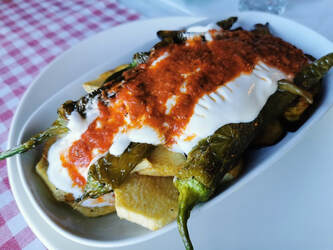 Fried Eggplants Patatoes, Peppers served with Yogurt Fried Eggplants Patatoes, Peppers served with Yogurt After drinking our tea, we ordered some food me the mixed fried vegetables, and my friend ordered famous Turkish Manti (Ravioli) The food came fast, waiter was a very friendly and helpful young man named Samet.  Turkish MANTI (Ravioli) Turkish MANTI (Ravioli) But I realized the homemade thick bread Samet brought to us was warmed and had a strange smell and it was probably going bad after a day or two. And some of my fried aubergines were cut so thick that they weren't cooked properly. And the flavors kind of not there compared to the same dish I had yesterday in Kusadasi downtown at a home-cook restaurant. That dish was something else. And the price here was also a little high which is normal given the stunning landscape, the location and lack of business potential. Anyways, at least we were warmed up and stomachs were full. We are ready to get going with our day of adventure.  So we hop in our van and drove around 2 miles before reaching Kirazli, took a sharp left turn to a mountain path, which splits to two sides after a few hundred yards,. One going up to the left was our first choice but seeing road condition with large pebbles we decided to stop and drove back to the junction where we parked the van started walking from the Easter path to the right.
 Private Tour Guide Tugrul Sokmen on Quest Private Tour Guide Tugrul Sokmen on Quest Once the Pine forest took over the vineyards, we saw couple of other mountain trails going to the West (left). But we didn't take any continuing our way to East side of the valley, finally seeing a hut but no signs of anybody present there. Then we had 200 yards more and saw beekeepers at work around the bee boxes. Not wanting to disturb the bees from a distance we asked if they knew any Caves around. Most beekeepers are mobile and they are not locals to the areas, so knowing this I reckoned they had no clue about a cave.
As I was walking I thought of Ephesus, because the City’s symbol was the Bee. You could have seen the Bee depictions minted on the city coins of Ephesus. It was probably symbolizing the pollination hence abundance and fertility. Even the name of Ephesus was derived from ‘Apasas’, ‘Api’ meaning Bee like ‘Abej’ in French and ‘Abeja’ in Spanish. Apasas, or Apisas meant the Queen Bee referring to the Amazon Warrior Queen who colonized the Area around 4000 years ago. As we see these Amazon warriors depicted in the friezes of so called Temple of Hadrian in Ephesus. The ones in the museum are original relieves, the ones at the site are replicas.  Artemis of Ephesus, Selcuk Museum Turkey Artemis of Ephesus, Selcuk Museum Turkey Ancient beekeepers around Ephesus must have been like these two fellows. They must have used the same hidden valleys to get the best of their ancient honey. I made a little research about the Ancient traditions of Beekeeping in the Antiquity. https://www.ted.com/talks/zehan_zhou_beekeeping_the_evolution_and_future_of_an_ancient_art 10:26 So the Statues of Mother Goddess Artemis of Ephesus also had the Bee depictions on her belt and also on the skirts. I learned that there is a cave painting find from Spain that is as old as 9000 years. And in Jordan Valley of Israil there is a behive find from 3000 years ago. Behives made out of unbaked clay and straw were found. Honeycombs are perishable it is almost impossible to find but near Milano during an excavation of an Etruscan trade center, archaeologists found a 2500 years old charred honey comb. And analysis showed the there was a pollen from a grapevine in that honeycomb. From Ancient writers and philosophers Aristotle talked about beekeeping in detail also the Roman writers Pliny the Elder, Virgil are some of the ones who discussed honey, beekeeping on their books. In the Bible there are 4 mentions of the Bees in the Bible (Deuteronomy 1:44, Judges 14:8, Psalm 118:12, Isaiah 7:18) I also looked at the Honey production numbers in the world and it turns out Turkey with 8.2 million metric tons is the biggest producer in Europe, and the second biggest in Asia after China. And the third biggest in the World after China, Argentina. And there are 4.5 million beehives in Turkey according to a research made in 2005.
 Tomb Stone of Yaren Dede Kirazli Kusadasi Tomb Stone of Yaren Dede Kirazli Kusadasi But the high ground was lovely with open are not much trees, it was green grass, meadows and a Symbolic Tomb next to a Juniper tree. The tomb allegedly belong to YARAN Dede. Important village elders, clerics, religious heads mostly remembered for generations with such tombs in almost every village in Turkey. This tradition must have been coming all the way from the Roman period because in the Ancient City of Ephesus, most of the monumental public structures such as fountains, library, war memorials were also either Family Tombs or Monumental Heroon Tombs of important political, military and social Icons. For example Fountain of Pollio, Memmius Monument, Trajan Fountain and even the Library of Celsus were some of the most important monumental tombs of Ephesus. During the private ephesus tours, these tombs are the most photographed structures. The area was very peaceful, we enjoyed a nice break and enjoying sun warming our necks. I realized the mountain trail actually continues making a circle around the hill and probably merging with the main asphalt road between Kusadasi and Kirazli. Since we left the car on the other end of the mountain, we couldn't follow the trail, although we knew that we could have seen some nice scenery, maybe we leave to next time.  Path going down from Yaren Tepe Path going down from Yaren Tepe Yes, it was a failure in terms of locating the Cave but still it was one good adventure out in nature with remarkably nice weather for a December. As we were walking down the same road, I was thinking about the Name written on the Tomb Stone 'YARAN' Dede. Because the word YARAN means PIERCING.
Or I was thinking they made a local twist or a mistake using the word YAREN which means FRIEND and the Cave was named after Aslanli or Yaren cave. So solving this mystery of words I thought to myself that the actual location of the cave mustn't be far from the Tomb. In my next adventure I am hoping to be more fortunate and finally will find this Yaren Cave. Stay tuned.. |
AuthorWrite something about yourself. No need to be fancy, just an overview. Archives
February 2021
Categories |
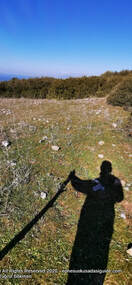





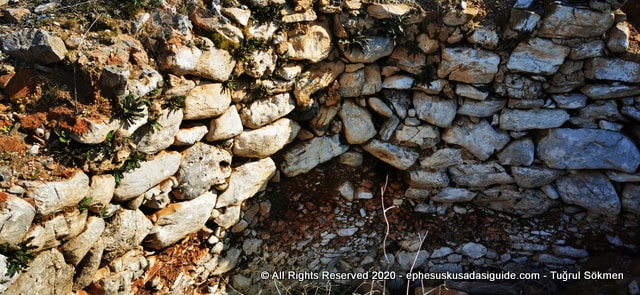

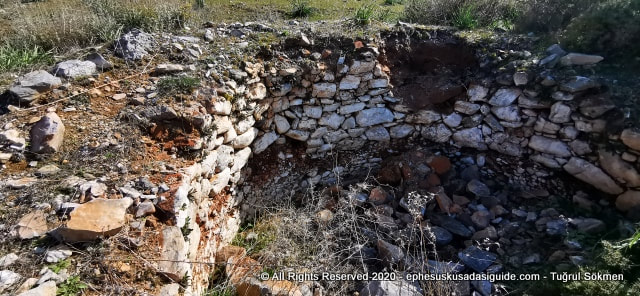



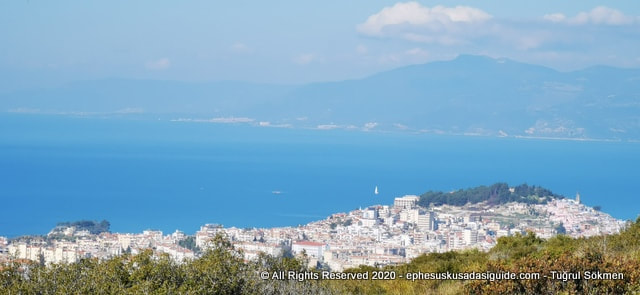
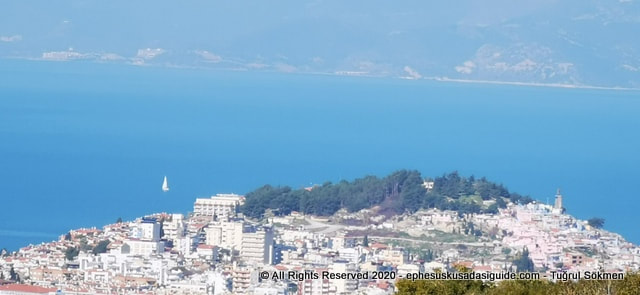




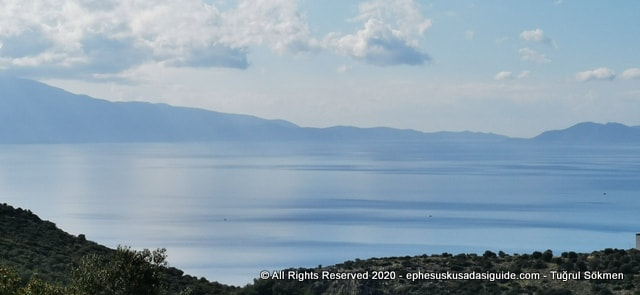




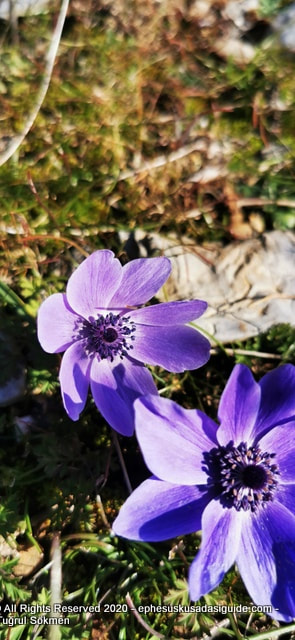




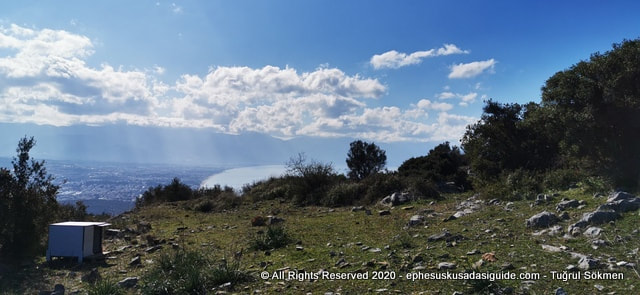

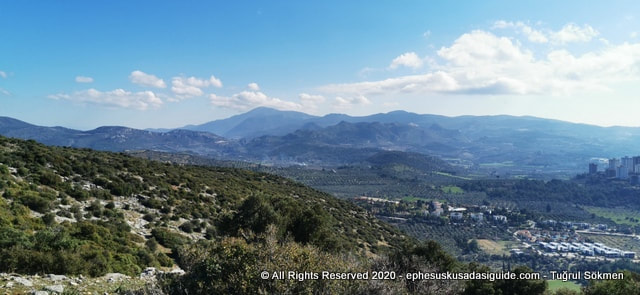

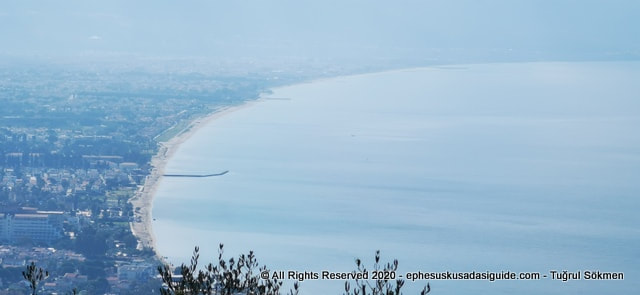


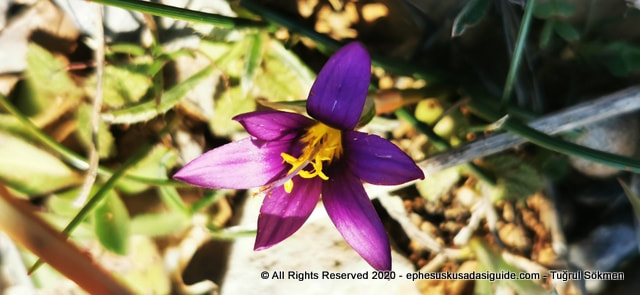





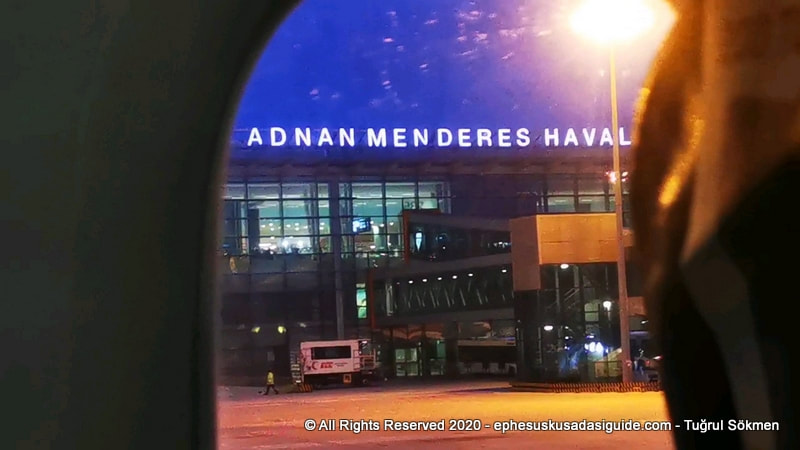





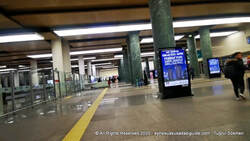




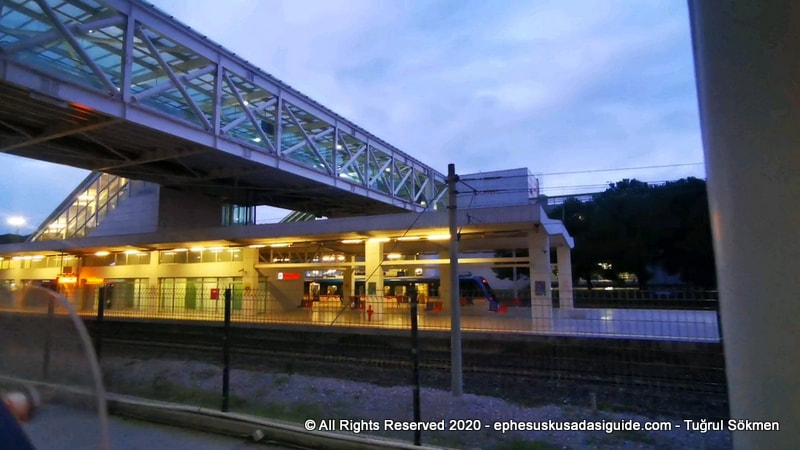

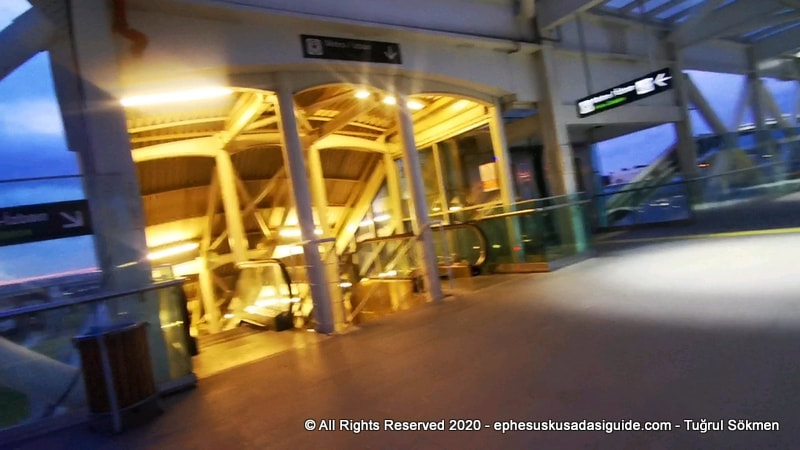




















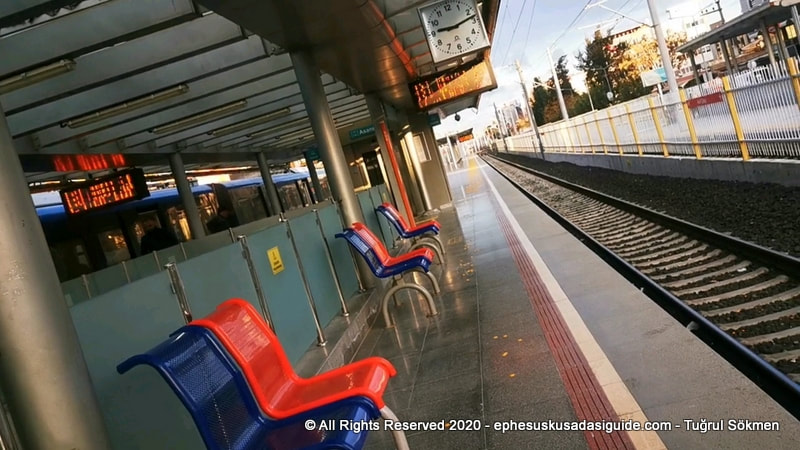


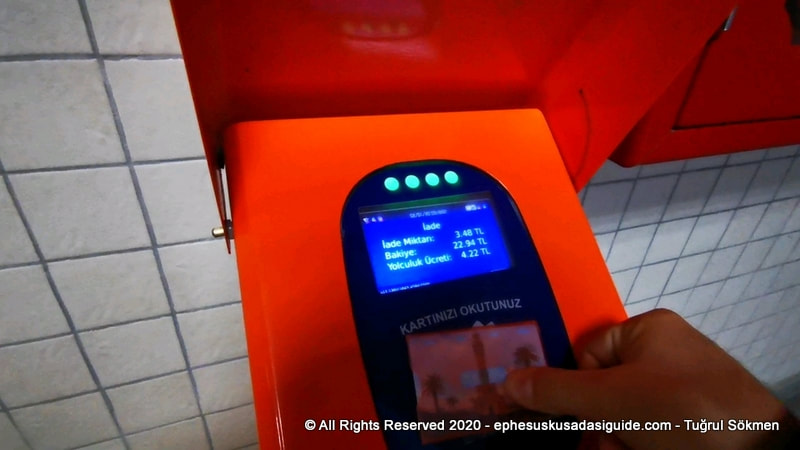



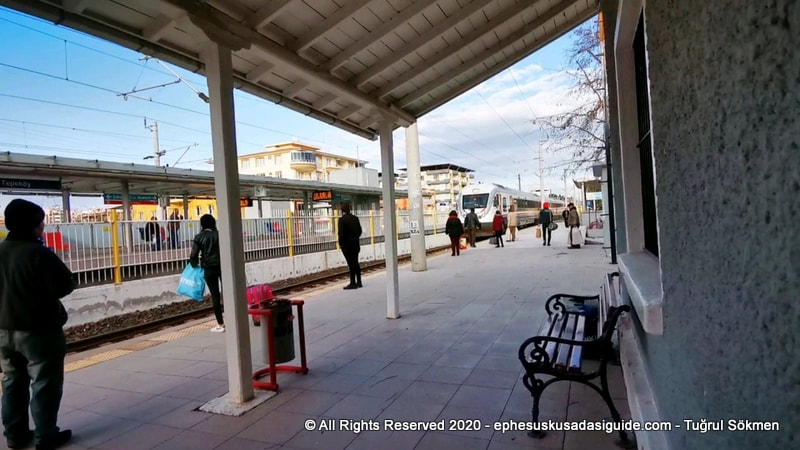







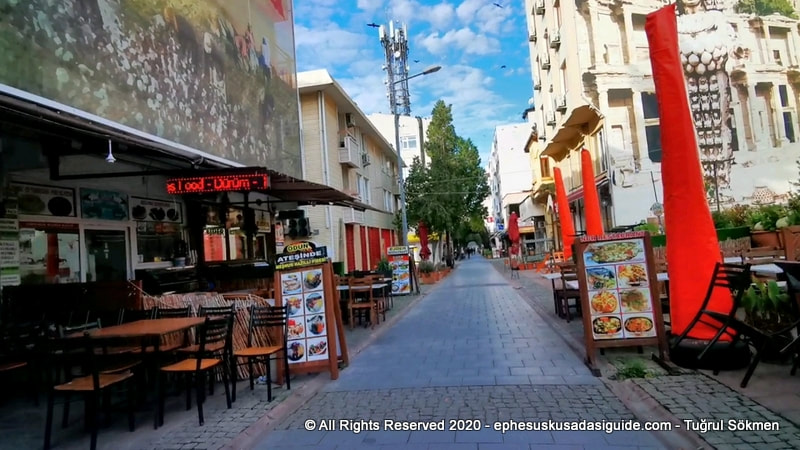


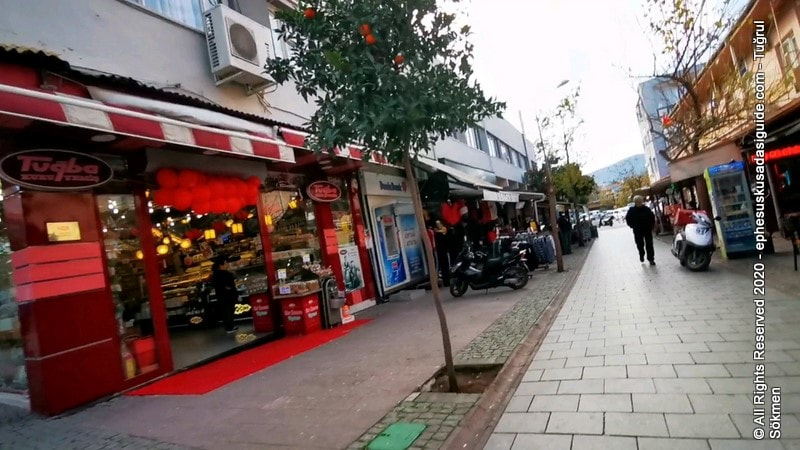





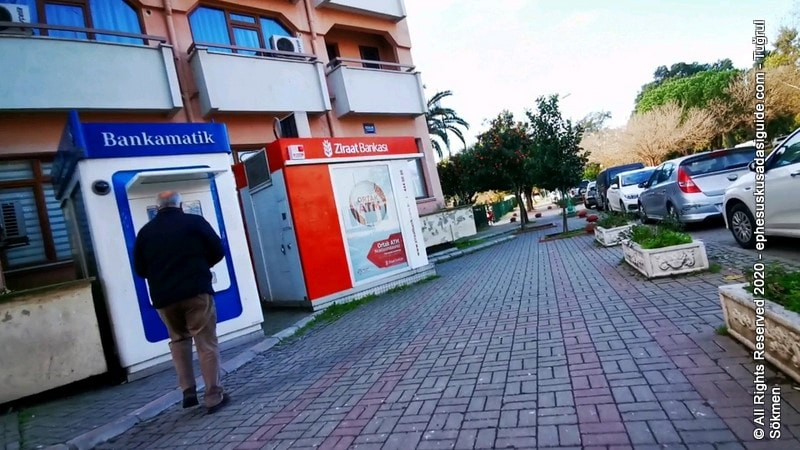

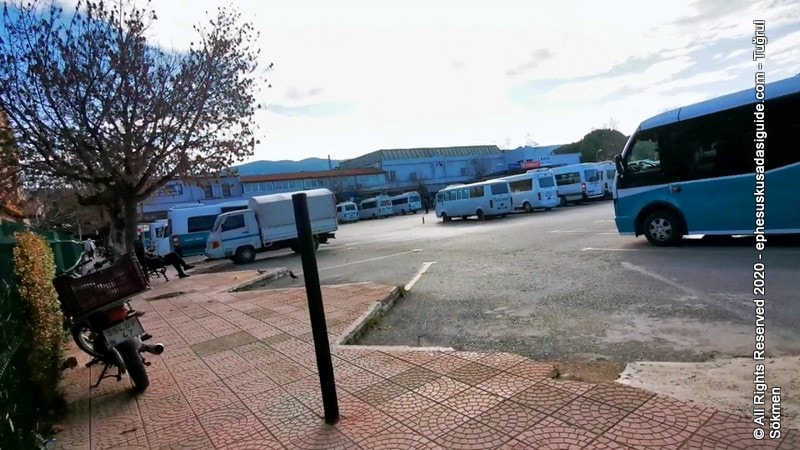













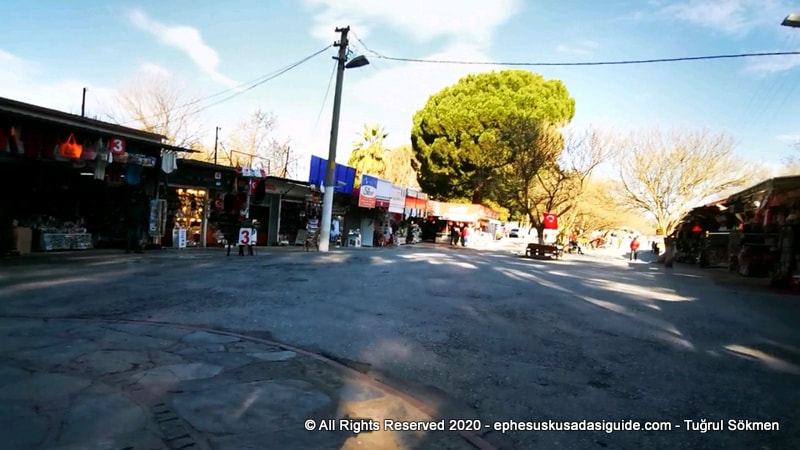









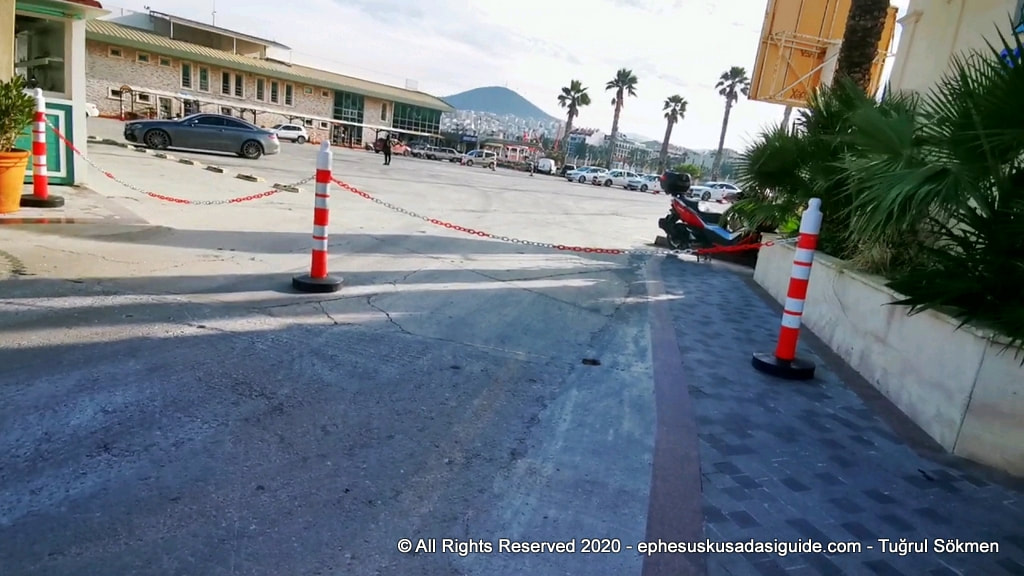

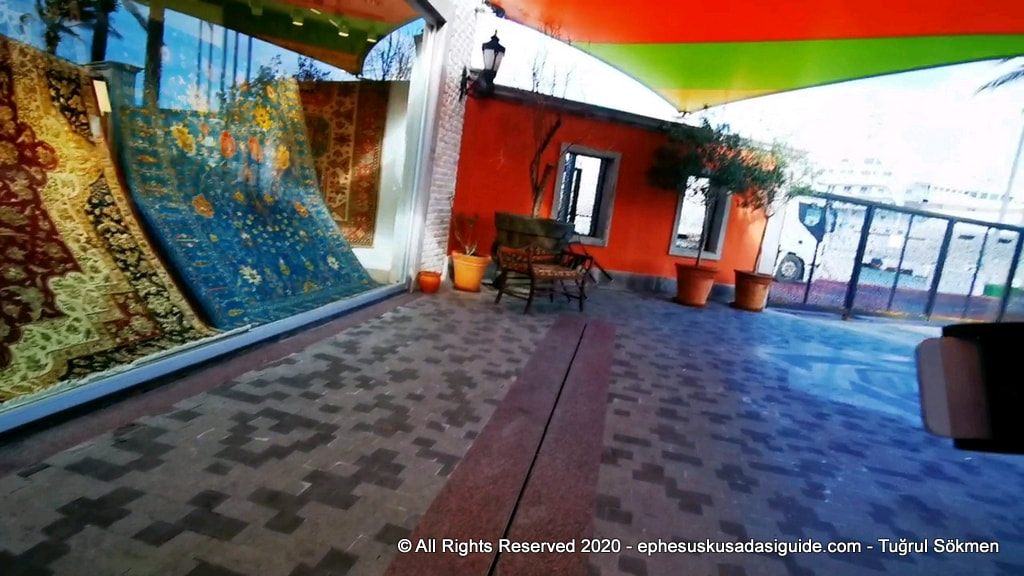




















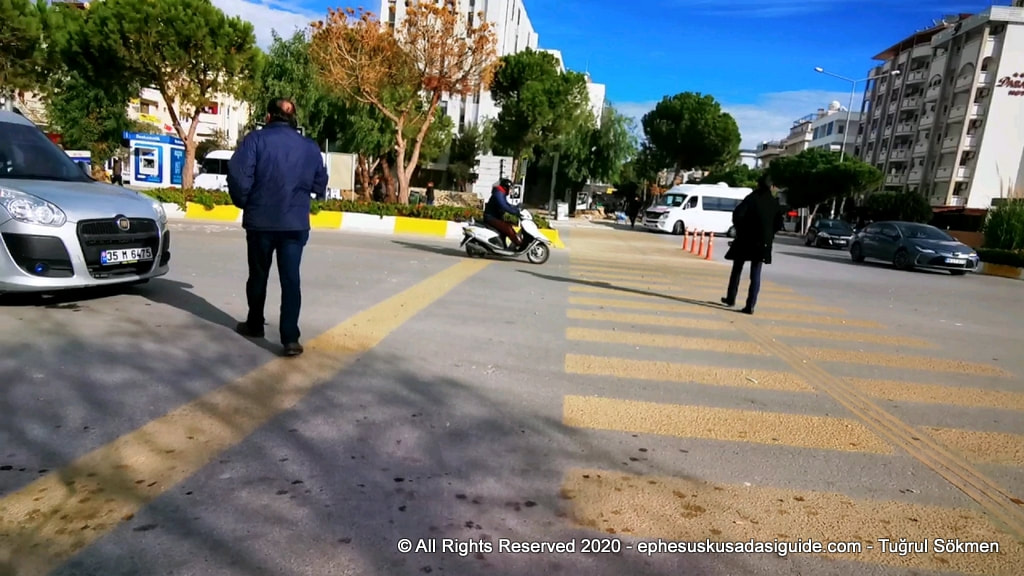
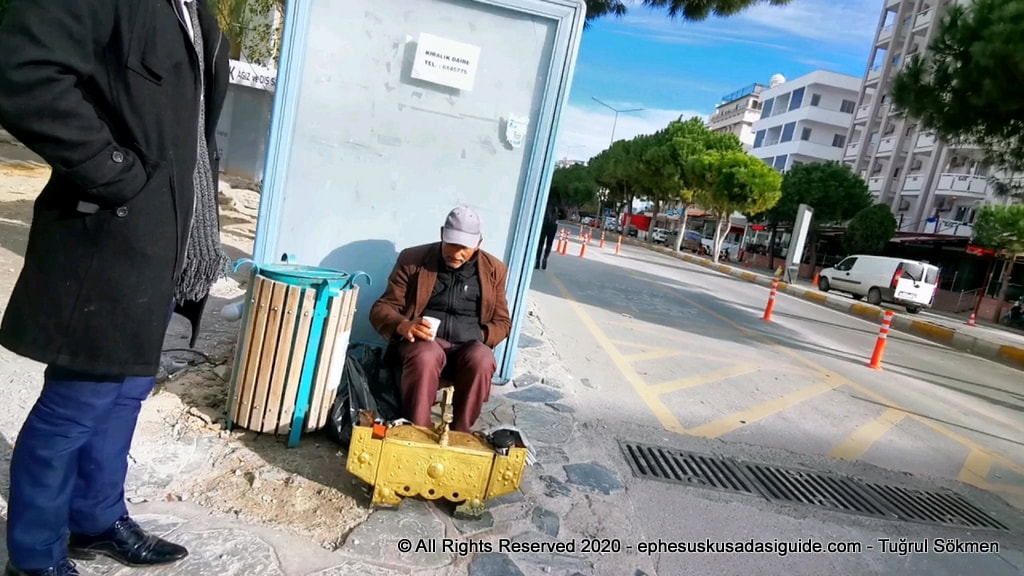

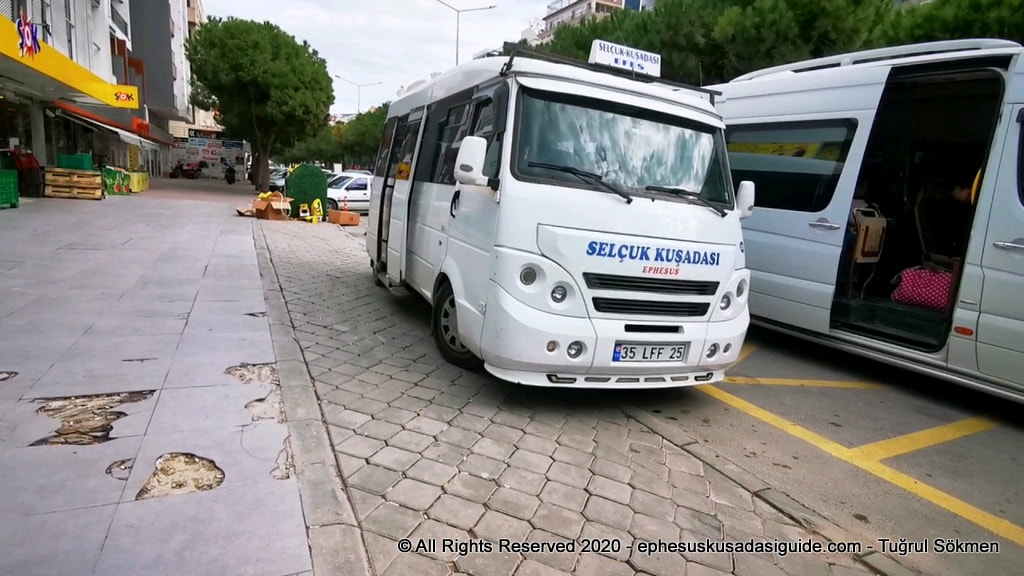

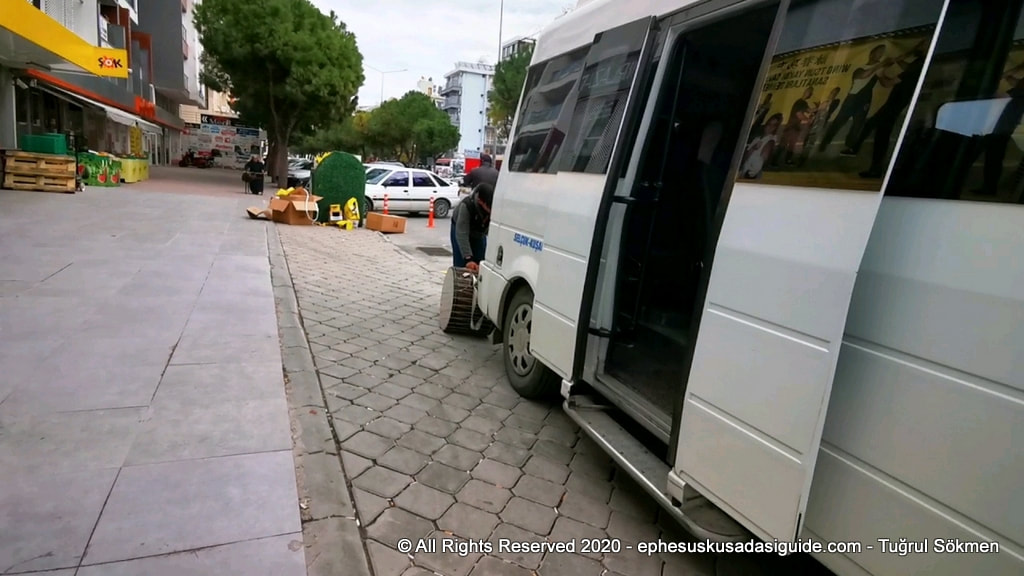




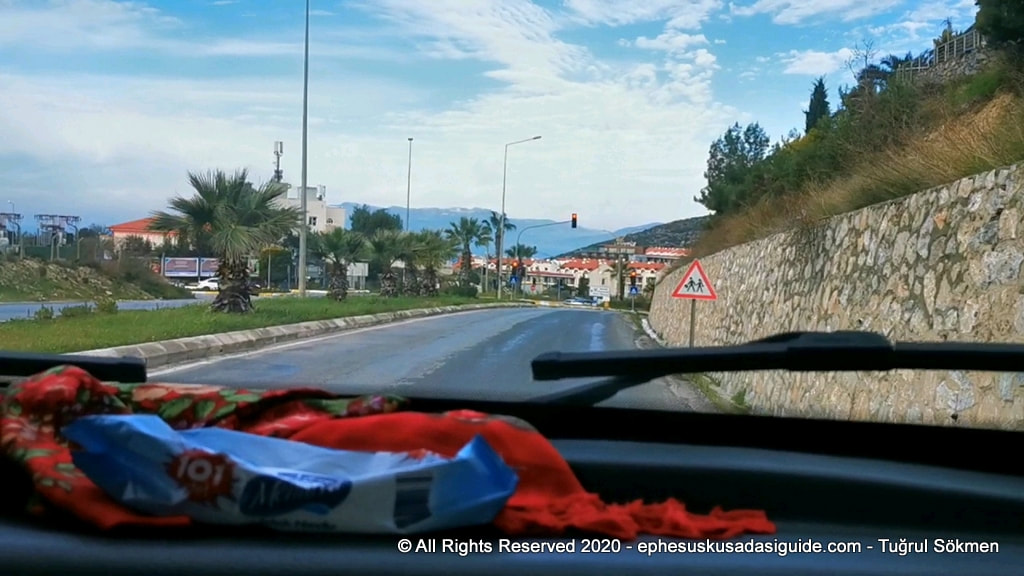
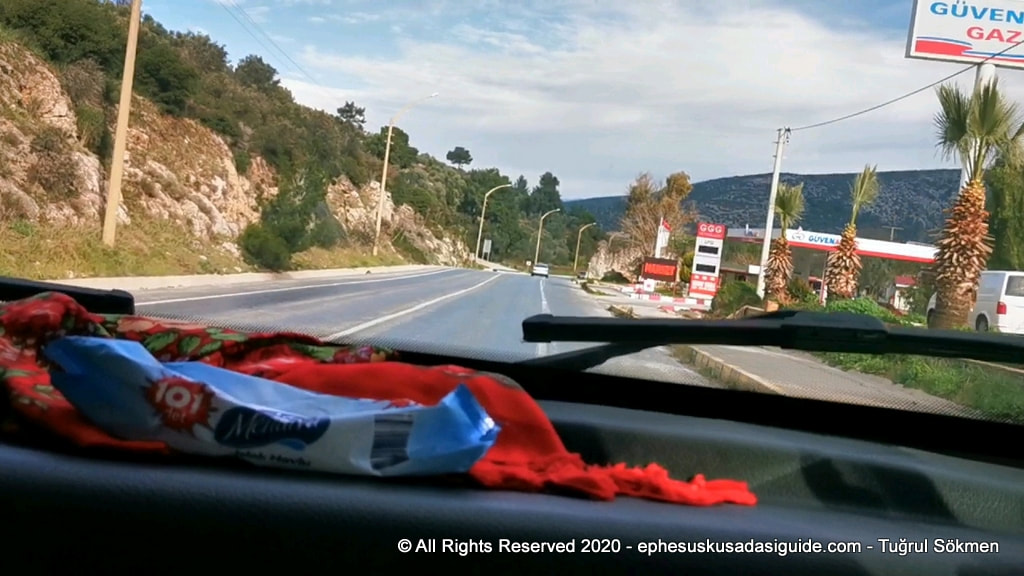


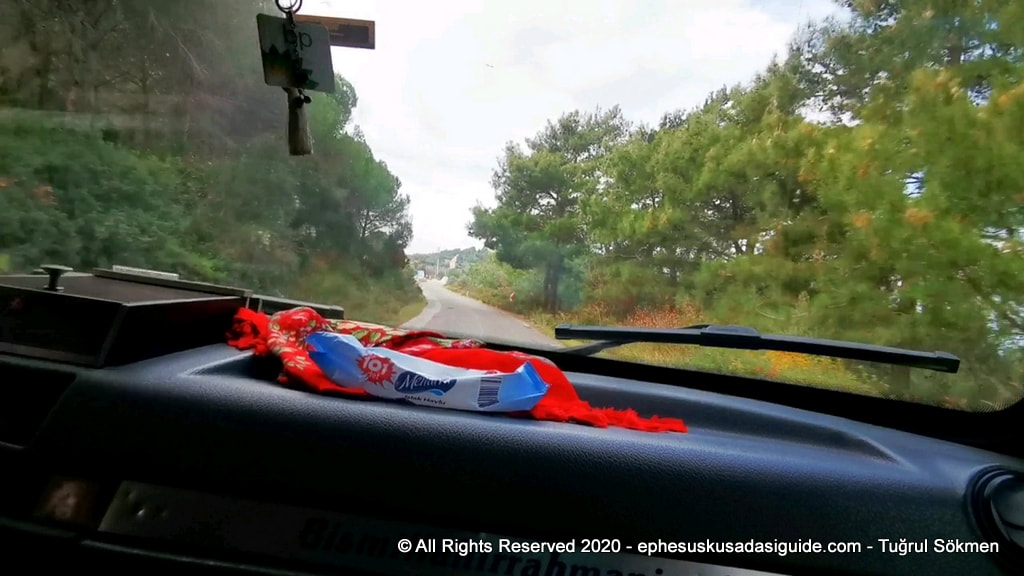













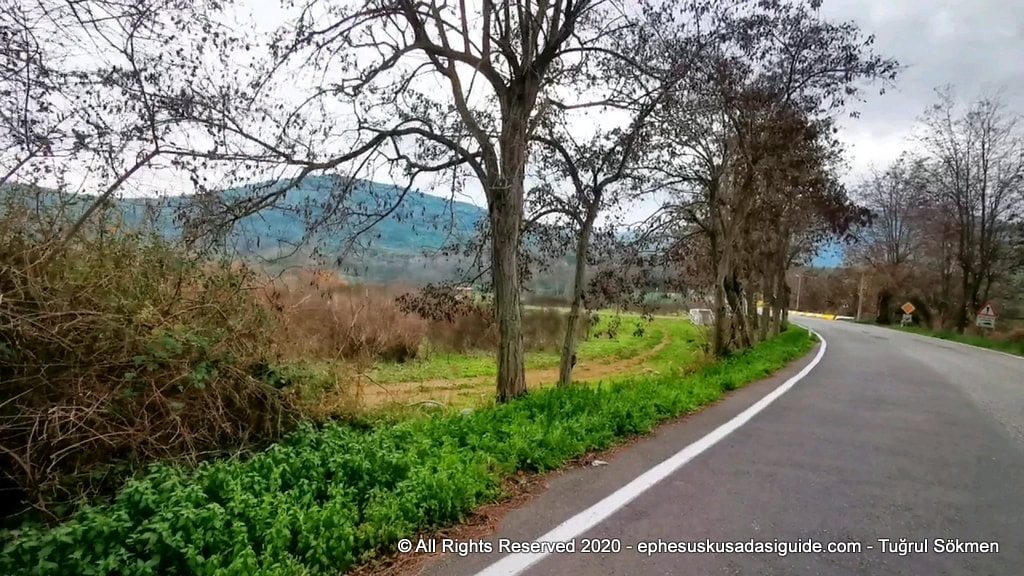
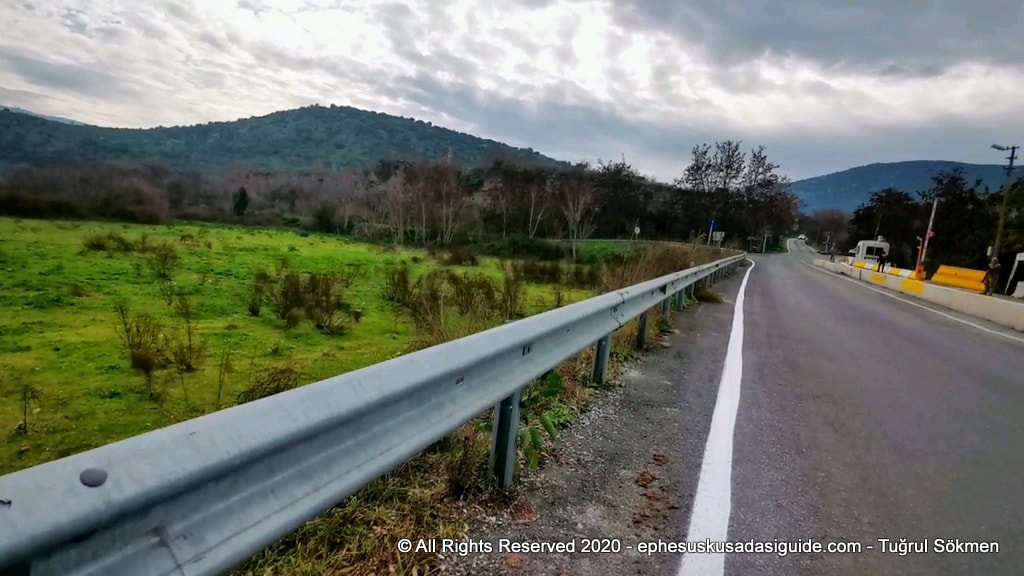





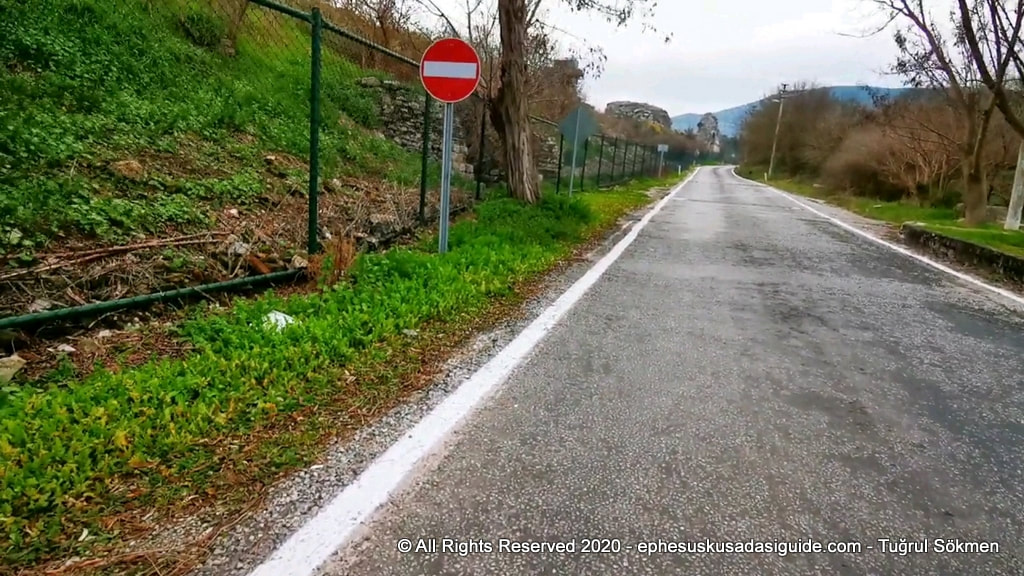
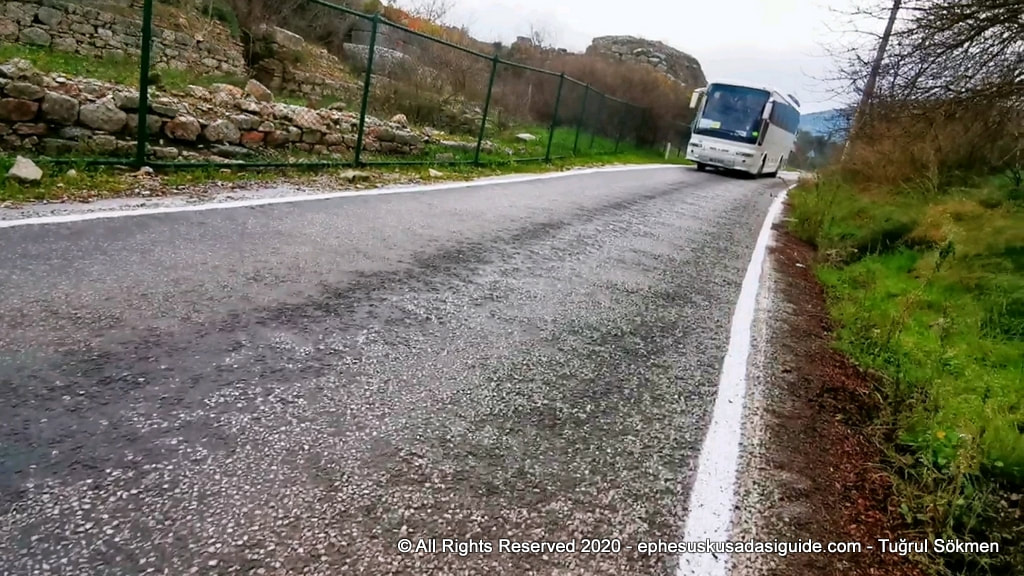


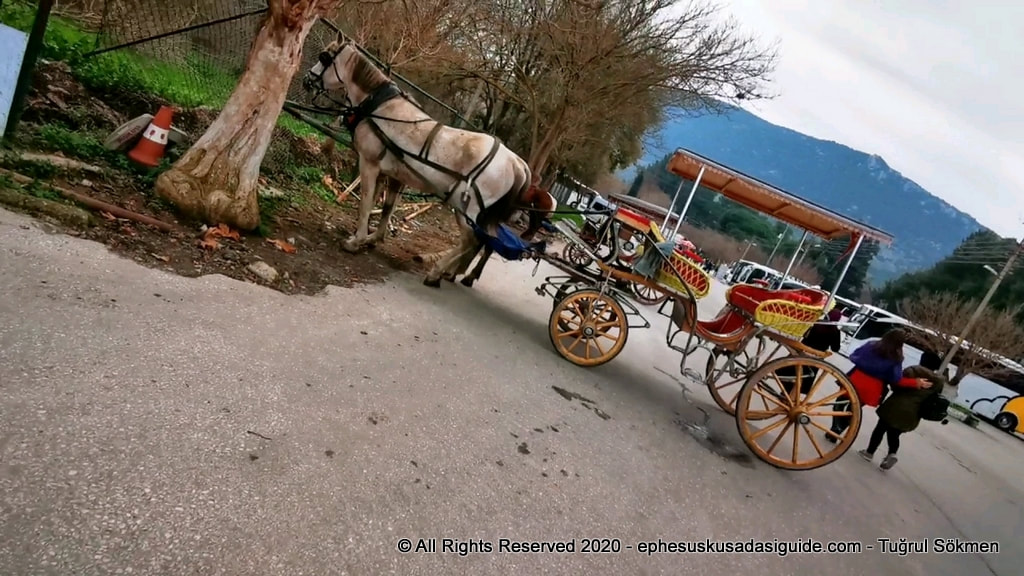

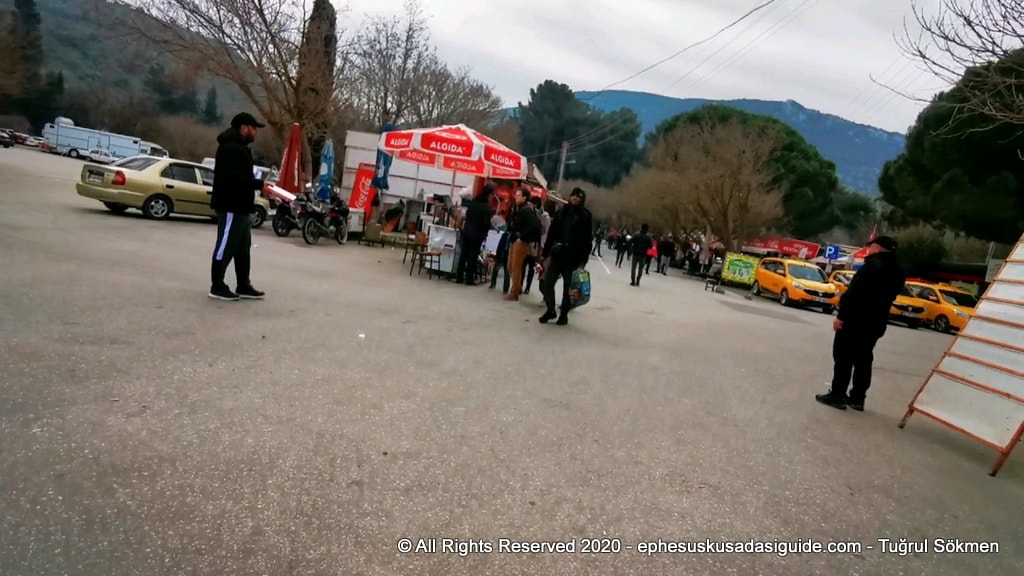

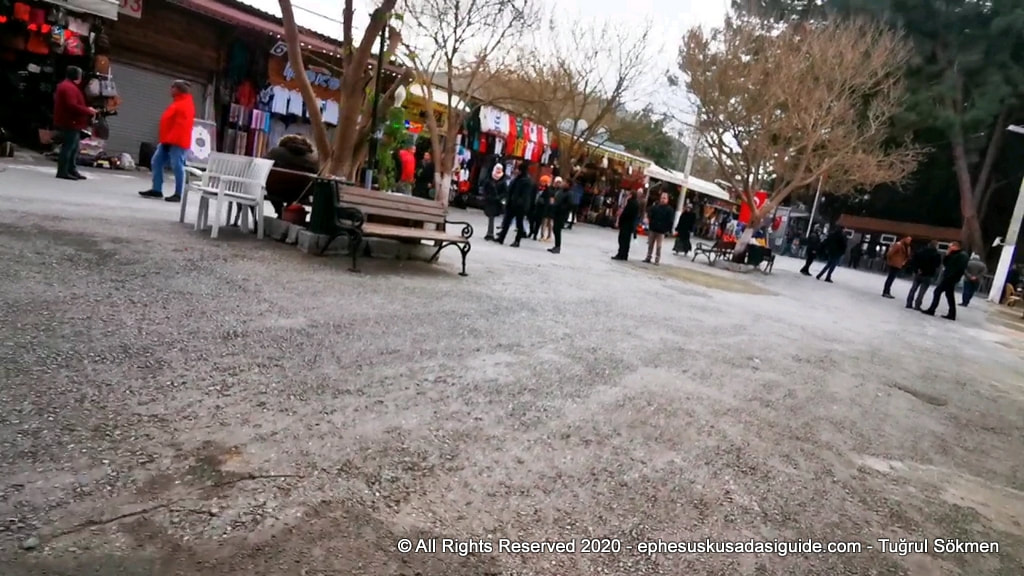



















 RSS Feed
RSS Feed
